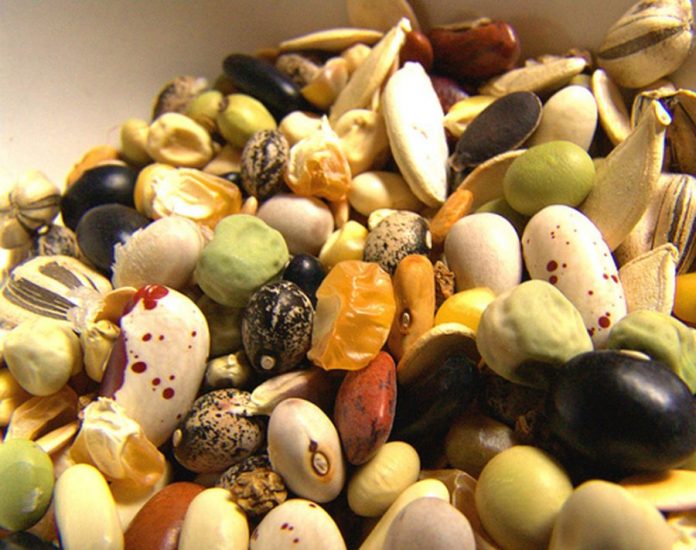 If you gaze at the tantalizing fruits and vegetables on the front of seed packets in the stores and imagine a garden plot full of luscious goodies, it’s definitely time to talk about plant reproduction.
If you gaze at the tantalizing fruits and vegetables on the front of seed packets in the stores and imagine a garden plot full of luscious goodies, it’s definitely time to talk about plant reproduction.
Although there are a number of ways to produce new plants, Mother Nature invented seeds as the basic reproductive units. These biological wonders may be as teensy-tiny as the dusty spores on the back of a fern leaf, or as large as a coconut, but each one contains genes from two parents whose “children” are similar to– but not identical with– their genetic donors. Sound familiar?
Genes are microscopic units of heredity strung together in that famous twisting ladder located inside the chromosomes in a plant cell’s nucleus. Genes are chemical combinations that determine how plants appear, behave, feel, smell and– most important in the case of fruits and vegetables– how they taste.
One ordinary garden plant cell has about five-million copies of each of its 20,000 genes. So, who’s in charge of the construction crew? To date, nobody has solved that mystery. Mutants occur, but species do a spectacular job of preserving their own characters while adapting to environmental changes.
Under proper conditions, dormant seeds spring to life. Right conditions constitute temperature and stuff to drink and breathe. Conditions vary from one species and location to another.
For example, in North Texas, lettuce and carrot seeds enjoy germinating outside in the cool ground and short days of mid-February, whereas tomato and cucumber seeds respond to the warmed soil and longer days of mid-April.
Seeds soak in water until they double in size, then the complex activity of sprouting gets underway.
Oxygen is where the friability or texture of garden soil is important. Seeds don’t breathe well if the earth around them is an ice cube, a baked brick, a swimming pool, or so tightly compressed only moss and algae grow on the surface. Good outdoor soil contains a lot of compost or partially decomposing material. The color leans toward black. It holds water, but will crumble.
Want to jump the gun next year? Germinate the seeds of heat-loving plants under shop lights indoors before spring is upon us. This works best if you buy an inexpensive bag of fine texture seed-starting soil– which contains sterilized compost, some volcanic matter called Pearlite, a slow-release fertilizer and maybe a little mica product called Vermiculite. The sterile compost lets the seedlings “sink an anchor” into the air, water and food.
Pearlite creates air pockets, fertilizer stocks the food and Vermiculite keeps water handy.
Place the damp starter-mix in an appropriate size container, plant the seeds, spray-mist with water, then cover with sandwich wrap to prevent moisture loss from evaporation. Place the container in a warm spot, like on top of the ‘frige or water heater. When the seedlings emerge remove the wrapper and put the container directly under a shop light. The light should be suspended just an inch or so above the tiny new plants. Change the height of the light as the plants grow. Shop lights come with lightweight chains so their height can be adjusted. Be generous with regular spray-misting.
If the seedlings are in six- or nine-pack containers, when the plants reach about three- to four-inches tall, wet the soil, then gently thin–the operative word here is “gently,” with a table fork–then pot individual plants into four-inch containers. Baby them along until time to harden them off prior to transplanting.



















